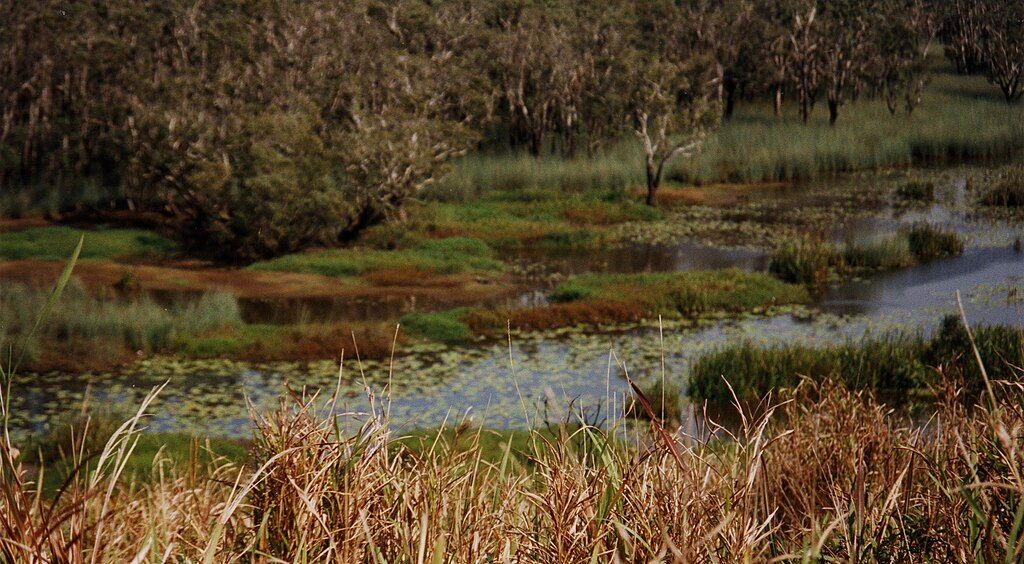Home/Curriculum resources/The Swamp/Activity 3 - Telling the story of a place
Learning Area:
The Arts
Year levels:
Level 9, Level 10
Suggested timing:
One lesson
Required resources:
Filming device, Local natural area

Activity 3 - Telling the story of a place
This activity is a part of the The Swamp resource.
Eubenangee Swamp National Park Australia. Gimuy country. Source: Wikimedia Commons. License: CC BY-SA 2.0.
Students visit a natural area, observe, and discuss their surroundings. In groups, they create a story using photos or films inspired by the environment, applying creative elements like color and sound. Back in class, they present and discuss their work, exploring the impact of their storytelling choices.
Required resources
Filming device
Local natural area
Step by step guide
Step 1: Exploration of a local natural area
Take students to a nearby river, creek, or other natural area, e.g. gardens on the school grounds. Begin with a few minutes of quiet contemplation and observation of the surrounding environment.
Start a class discussion about what they observe around them, such as:
What plants and animals are here? Are any plants flowering or fruiting? What animals might come to eat it?
What time of year is it, what is the weather like, has it rained recently?
Is there water here? How much? What does the water look like, does it look healthy? What does it smell like?
Is there rubbish? Are there other problems you can see? This should begin a conversation about the health of the place, and what stories they can tell about their place.
Step 2: Create a story using photos or film of the local area
In groups of 3 or 4, students can discuss ideas to come up with a story about this place. Students will film or take photographs. The story might only take shape once filming begins. Students can take inspiration from their mind map or the film “The Swamp”. Students will use their creativity to build a narrative and include elements previously discussed – theatrical narration, colour, sound, etc. Note: If cameras are not available, a series of drawings can be produced, e.g. in a cartoon or storyboard style.
Step 3: Presentation and discussion of story
Back in the classroom, student groups can show their film or give a short presentation of their photographs or drawings.
Discuss the following:
How did students use colour, sound, humour to deliver their message?
Were there any surprises or new perspectives?
Were messages clear, like a story, or were they thought-provoking, with many possible interpretations?
Optional: Film could be edited if there is access to basic film editing software.
Related activities within this resources:

Activity 1 - The Swamp
Students view "The Swamp" film, exploring its genre, impact on Indigenous storytelling, deviations from traditional documentaries, and analyse the elements used for meaning and audience engagement.
Suggested timing:
30 minutes
Required resources:
AV equipment

Activity 2 - Mapping story places
Students explore the swamp's centrality to Yolngu life, compare it to their own surroundings, discuss challenges to traditional culture, and gain insights into Indigenous life.
Suggested timing:
30 minutes
Required resources:
Laptop/tablet, Internet connection, Goggle Earth